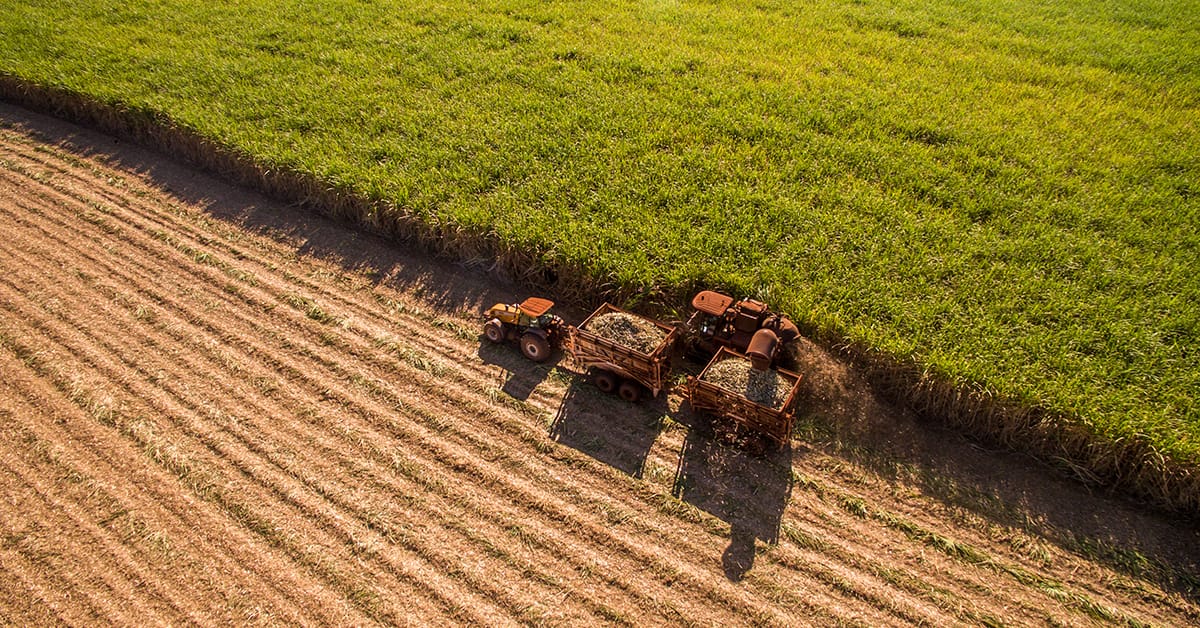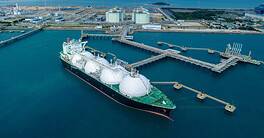A stellar year for Latin America’s agricultural sector is powering a fresh wave of M&A activity.

The stars were aligned for Latin America’s agricultural sector in 2021. Rising global commodity prices and favorable FX spreads for the region’s exporters combined with solid harvests to bring record-setting profitability for virtually every major crop in the region. “There was also a significant rise in total planted area, which shows the great moment we were going through,” says Guilherme Melo, head of agribusiness consulting at Itaú BBA.
“This last year was just great,” adds Uriel Rotta, associate at Stracta Consulting and partner at WBGI Venture Building. “[It was] something we don’t see too often in terms of margins, especially for producers.”
The bottom-line surge is now powering expansion across the sector, as a wave of Brazilian-led consolidations washes over the region. The country, responsible for 70% of total mergers and acquisitions activity in Latin America in 2021, saw a 250% jump in agricultural mergers on a year-on-year basis.
Given the cross-border nature of most deals, the economic impact was felt far beyond the South American country’s borders. Just last month, meat-processing behemoth JBS announced its $92.5 million acquisition of Italy-based Kings Group. The company also moved into the Australian market with the takeover of Huon Aquaculture, and into the Spanish market with the acquisition of cell-cultivated meat group BioTech Foods.
Not even the many climate-related difficulties could hamper the sector’s performance. Widespread droughts and frosts in southern Brazil and Argentina weighed on coffee, soy and wheat production in the second half of the year, but the monumental rise in commodity prices was more than enough to compensate.
“Production was not the key factor driving the agricultural profitability in 2021,” notes Dev Ashish, Latin America economist at Societe Generale. “Strong recovery in external demand and the surge in commodity prices improved terms of trade and helped the agriculture sector’s profitability in LatAm in 2021.”
The S&P GSCI Agriculture Index, a proxy for combined global agricultural commodity prices, recorded a 20.3% jump for the year, in line with the closely observed United Nations’ FAO Food Price Index, which saw global food prices rise 19.5%.
A couple of Latin America’s major exports saw even bigger price hikes. CME Live Cattle futures rose nearly 26% year on year, while the Dow Jones Coffee Index soared a whopping 95%. “Coffee production is rising; technology is getting better,” explains Rotta. “In the short run, we expect prices to stay elevated, as demand will remain hard to meet.”
Brazil, the world’s largest exporter of meat, soybeans, coffee and sugar, reached a total of $120.6 billion in exports for the year, a record, and a 19.7% rise over the prior year.
Although crop volumes in the country were pretty much stable from a year before, Brazilian producers took advantage of a devaluating Brazilian real to export more.
The impact was felt across the region. In neighboring Paraguay, wheat and soybeans led the country to new export records. A 20% rise in crude palm oil prices helped propel export growth above 30% in both Colombia and Ecuador—although Ecuador’s dollarized economy did not benefit from devalued currencies. The Andean countries benefited from stratospheric coffee prices due to frosts in Brazil.
Uruguay crushed its prior records for both volume and margins, with agricultural production reaching a record 70% of all the country’s exports. Furthermore, Uruguayan President Luis Lacalle Pou recently reported that an imminent Free Trade Deal with China is set to propel the country’s meat sector even further in the coming years.
Meanwhile, Argentina, the world’s leading exporter of soybean fodder, saw 2021 grain exports hit $32.8 billion, according to the nation’s oil and cereals industry group, CIARA-CEC—the highest in 20 years. Producers there also took advantage of rising prices for corn and wheat.
The country’s meat exports dropped 5%, mostly due to government restrictions that prohibited selling more than 50% of the nation’s favorite meat cuts to external markets. Even so, higher prices more than compensated.
“Argentina lost a golden opportunity to combine record production with rising increases in meat prices, although it’s going to be a good year nonetheless,” says Francisco Ravetti, an analyst with AZ Group. “But we were on the verge of finishing the year with 800,000 tons of cattle meat exports—a record for us.” Neighboring Uruguay took up the slack, expanding its meat sales, primarily to China.
Consolidation Wave
With profits stoking balance sheets, the entire agricultural chain is ripe for expansion and restructuring—and a wave of M&A is already winnowing the field. Meat processor JBS, in addition to its move into Europe and Asia Pacific, is reportedly offering $1.3 billion for completing the $5 billion acquisition of US-based Pilgrim’s Pride, a move which started in 2009. JBS currently owns 80% of the company.
Minnesota-based Cargill, which saw Brazilian profits rocket 500% in 2020, posted a record $134 billion in revenue in 2021. Those profits helped fund its $4.5 billion takeover of poultry producer Sanderson Farms, with the aim to create the leading poultry company in the US. In Argentina, multinational Venture Builder Cono Sur Inversiones purchased the credit operations of grain giant Los Grobo.
Also last year, Brazilian food processor Mafrig acquired Canadian Sol Cuisine, American Hillary’s, and 25% of Brazilian giant BRF. The merger of sugar cane producer Terra Santa with grain producer SLC Agricola also shook the region’s market. The operation led to massive share buybacks in the largest-ever public-to-private deal in the region.
Brazil was also base for Latin America’s biggest agriculture-related IPO to date, the $1.3 billion debut of Raizen—a sugarcane and ethanol producer—on the São Paulo Stock Exchange in August.
“Greater M&A and IPO activity witnessed last year highlights improving governance among the region’s agribusiness players,” explains Melo. “Given the importance of the sector on the region’s economies, we see this trend as a sign of further sustained expansion.”
Noting, however, that privately held companies make up for a large share of the region’s agricultural producers, Stracta’s Uriel cites other widely used expansion strategies: “land purchases, machinery, technology and hedging were some of the main investments on the producer’s side.”
Future Scenarios
What’s ahead? Supply chain bottlenecks, climate risk, inflation and rising interest rates could make 2021 an outlier.
“Food prices are running around a decade high, and additional gain would be difficult, particularly when supply/demand dynamics reverse course,” says SocGen’s Ashish. “The rising input and borrowing costs could also hurt the profitability of the sector.”
Subsector pain will not be evenly spread. Rotta expects that while robust sales will hold overall, 2022 will be much harder, “especially for the small and midsize producers that have fewer means to protect themselves from increasing market risks. Chain commanders are likely to continue maintaining last year’s gains,” Rotta says, “but producers will be more exposed.”
On balance, despite the short-term risks, conditions appear favorable for continued growth in agribusiness in the region—albeit not at the same pace as last year. The UN Food and Agriculture outlook, for example, predicts net margins across Latin America and the Caribbean to expand 31% over the next decade, half the rate recorded 2000-2010.
The report also highlights the importance of trade in mitigating seasonal risks and ensuring future growth. “Geopolitical issues and partnerships are also proving crucial for trade partnership,” notes Ashish. “To that extent, the LatAm region is relatively better placed than some large competitors.”
Ashish says the continent’s banking system is in good shape to help the sector in the long term, but warns of short-term risks posed by rising interest rates and global financial tightening. “The ongoing financial tightening and the gradual withdrawal of emergency liquidity and credit supports will probably lead to a rise in NPLs [nonperforming loans], with the economy also moving in the wrong direction in the near term. However, banks provided for these future contingencies and should remain stress-free through the tightening phase. At the same time, the rising costs and the possibly higher NPLs will dent banks’ profitability,” he explains.
Uriel adds, however, that banks are just a part of the equation: “Agribusiness has many strands. And although rising interest rates affect the sector, we believe that capital inflows should remain very elevated in several industries, such as agritechs and agriculture-focused debit.”
Furthermore, the Stracta associate notes that technology could help mitigate many of the current risks, such as climate disruptions, supply chain constraints and labor shortages. “5G internet technology will be a turning point for agriculture in Latin America, leading to greater efficiency and better outputs.”
Societe Generale’s Ashish weighs the importance of long-term environmental goals for the entire sector. “In our view, global trade treaties/relations and the environmental goals are likely to have more significant implications on LatAm agriculture and policies than the domestic politics, which will continue to respond inadequately to the growing needs. Over the long term, climate goals, regulations and trade relations will be the driver of major agricultural trends in the region.”



